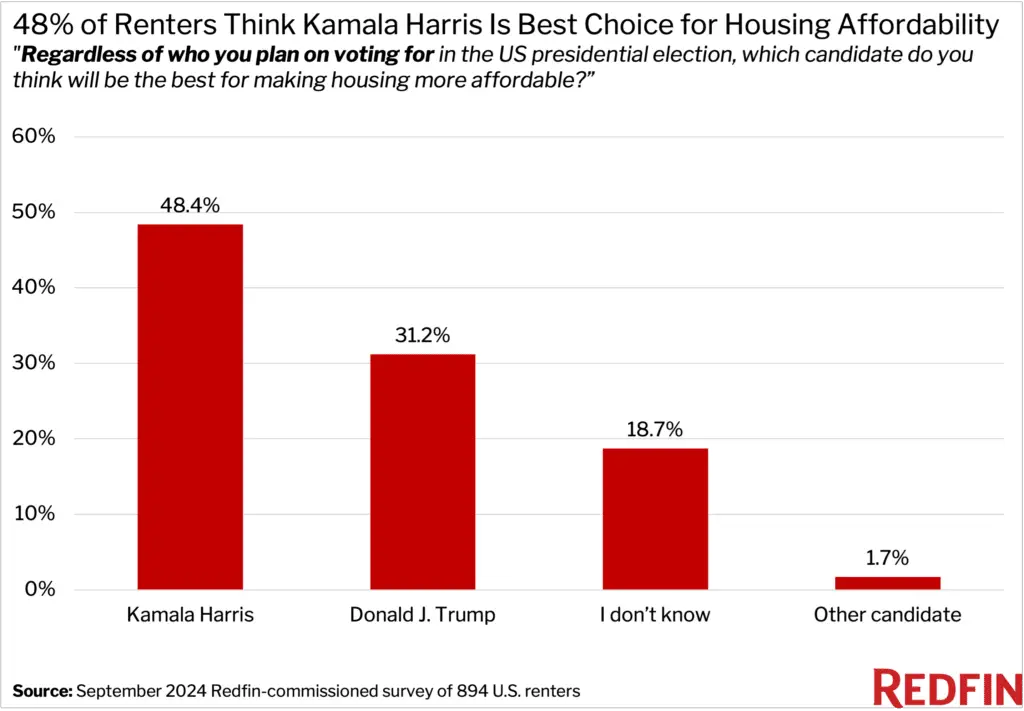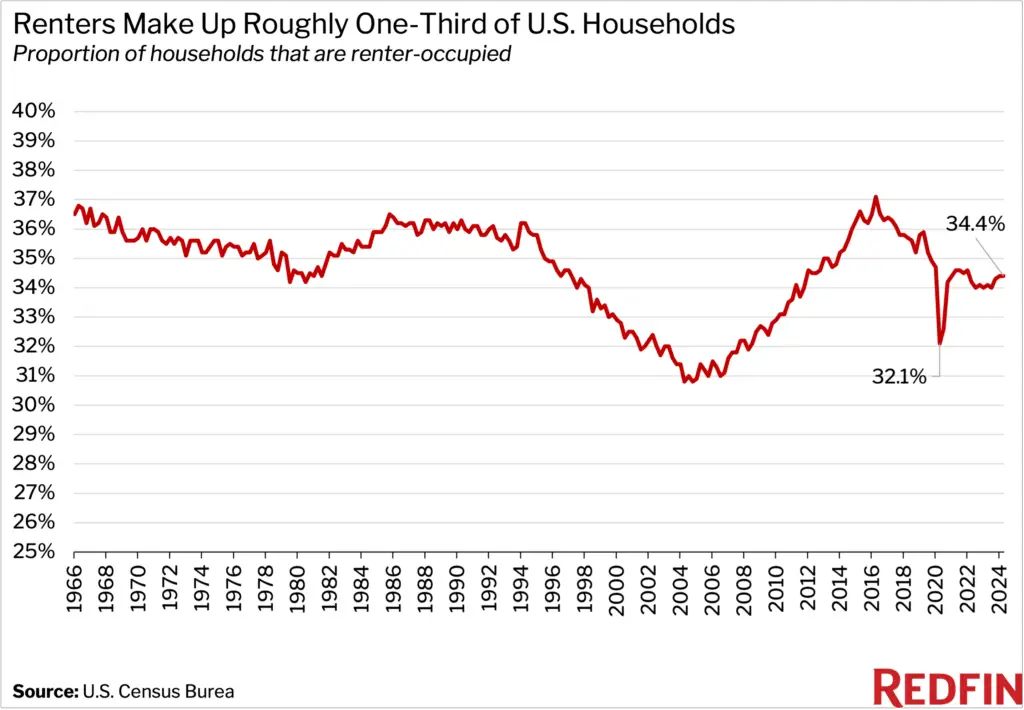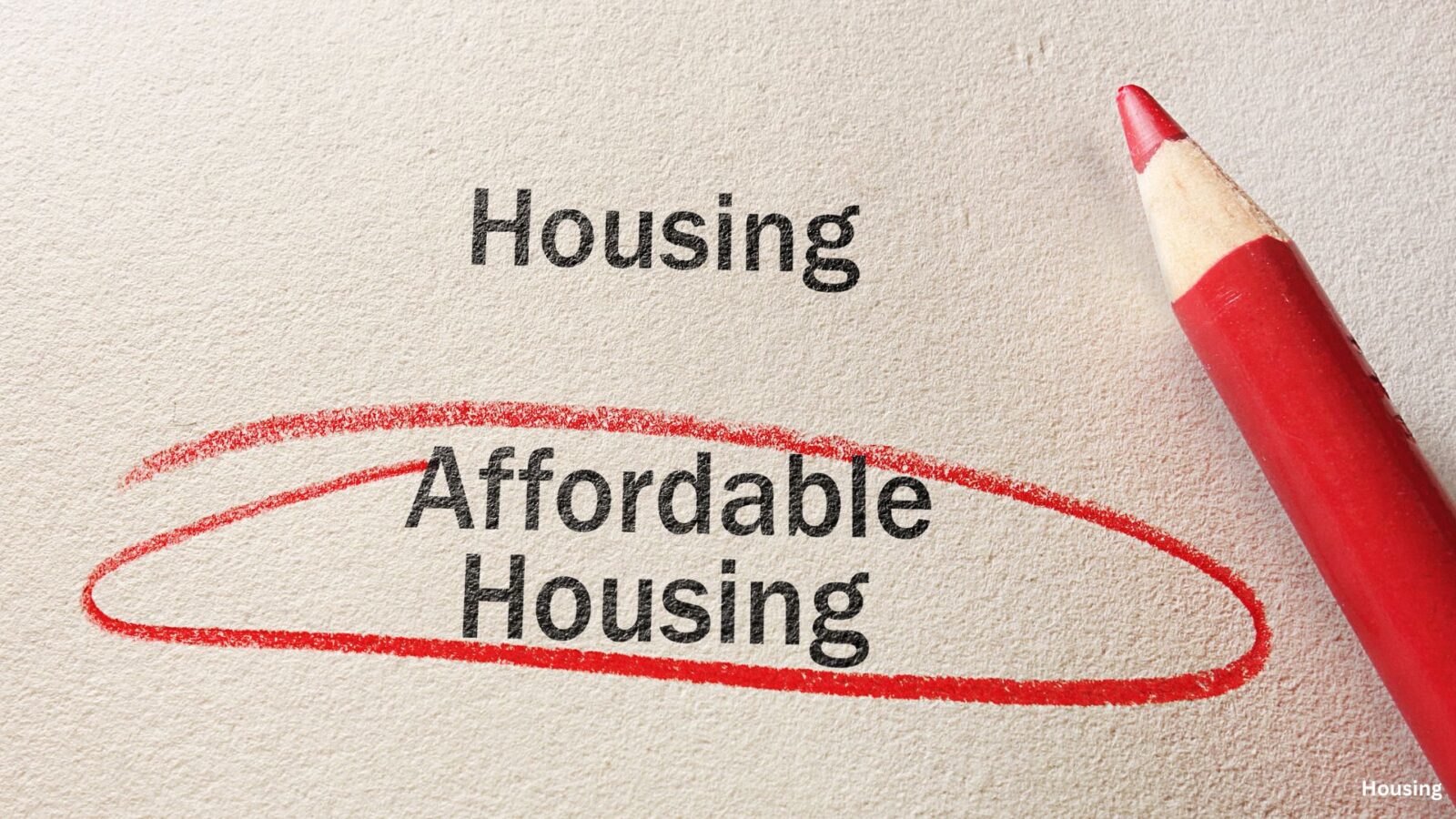Housing affordability has become a central issue in the 2024 presidential election, with many renters across the country looking to the next president to ease the financial strain caused by rising living costs. As voters weigh their options, Kamala Harris and Donald Trump have emerged as the two main contenders when it comes to addressing the housing affordability crisis. In this article, we explore housing affordability under Trump and Harris, diving into their respective approaches and the perspectives of renters, as revealed by recent surveys.

Renters’ Preferences: Harris vs. Trump
According to a September 2024 Redfin-commissioned survey, nearly half (48.4%) of U.S. renters believe that Kamala Harris would be the best choice for making housing more affordable, while about one-third (31.2%) think Donald Trump is better suited for the task. This divide reflects the political leanings of renters, who tend to skew Democratic due to their younger demographics and urban living situations, where the cost of housing is often much higher.
However, it’s important to note that housing affordability under Trump and Harris would be shaped by much more than political rhetoric. The housing crisis in the United States is the result of long-standing issues such as supply shortages, zoning regulations, and financial policies. Both candidates have expressed intentions to address these challenges, but they differ in their proposed solutions.

Harris’ Approach to Housing Affordability
Kamala Harris has long been an advocate for housing reform, focusing on federal and local collaboration to create affordable housing options. Her plan emphasizes the construction of new housing developments, especially in areas experiencing housing shortages. Harris has proposed increasing federal funding for affordable housing initiatives, providing tax incentives for developers, and supporting renters through increased housing subsidies.
According to Redfin’s Chief Economist Daryl Fairweather, while renters see Harris as the more favorable candidate, her efforts would need to be complemented by local governments and private developers. “The president can’t fix the housing affordability crisis on their own,” Fairweather explains. “It requires a coordinated effort from federal and local levels, along with incentives to encourage more homebuilding.” The long-term focus of housing affordability under Harris would likely hinge on these partnerships, as she aims to address systemic issues contributing to the housing shortage.

Trump’s Approach to Housing Affordability
Donald Trump, on the other hand, has a different approach to housing affordability. During his previous presidency, Trump focused on deregulation and tax cuts to stimulate economic growth. He argues that reducing regulatory barriers to construction and incentivizing private developers would increase housing supply and, in turn, lower costs. Trump’s platform includes encouraging states and municipalities to loosen zoning restrictions that limit housing density, particularly in high-demand urban areas.
While housing affordability under Trump might appeal to some voters, especially those in the real estate industry, critics argue that his policies could disproportionately benefit developers and investors rather than renters. Nonetheless, Trump’s supporters believe that fewer restrictions would allow for more rapid construction of housing units, addressing the shortage that has driven prices upward in recent years.

The Reality: Housing Affordability Requires More Than Presidential Action
It’s worth noting that the housing affordability crisis is complex, and neither Trump nor Harris can solve it alone. Fairweather’s analysis reminds us that long-term improvements will require consistent efforts over multiple years, with collaboration between federal and local governments. The goal, according to both candidates, is to increase the supply of affordable housing, though they differ on how to achieve this.
As the 2024 election approaches, renters are increasingly voicing their concerns about housing affordability under Trump and Harris. With the cost of homeownership soaring, and renters now comprising 34.4% of U.S. households, the issue is becoming even more pressing. Renters and homeowners alike will be watching closely to see which candidate can offer the most viable solution to one of the most critical challenges facing the nation today.

Housing Affordability Under Trump and Harris
As we approach the 2024 election, the debate around housing affordability under Trump and Harris continues to be a central focus for many voters. Whether through Harris’ federal funding initiatives or Trump’s deregulation strategies, renters and homeowners alike are eager to see actionable solutions that will ease the burden of high housing costs. While each candidate offers different approaches, it remains clear that housing affordability will require sustained efforts beyond any single presidency to ensure long-term relief.








